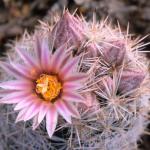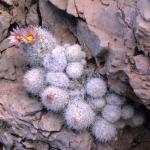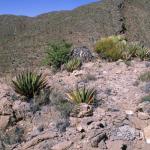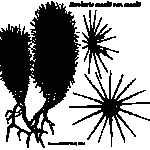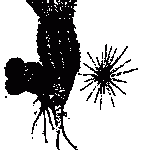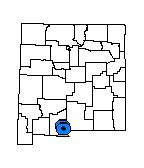Escobaria sneedii var. sneedii (Sneed's Pincushion Cactus)
| USFWS | State of NM | USFS | BLM | Navajo Nation | State Rank | Global Rank | R-E-D Code | NMRPTC Status | Strategy Status |
|---|---|---|---|---|---|---|---|---|---|
| LE | E | S2 | G2G3QT2Q | 2-2-2 | R | SS |
| Overall Conservation Status | Documented Threats | Actions Needed |
|---|---|---|
| EFFECTIVELY CONSERVED | Residential and commercial development, Collection |
genetic/taxonomic studies |
Although the population of E. sneedii var. sneedii is distinct as a whole, it may be difficult to assign some plants in the population to a specific taxon without the aid of geographic information and this variation continues to present difficult taxonomic problems. For example, plants from the Guadalupe Mountains that intergrade between E. sneedii var. leei and E. guadalupensis are morphologically indistinguishable from E. sneedii var. sneedii of the Franklin Mountains (Baker and Johnson 2000).
The presence of this variety in the limestone ranges of adjacent Chihuahua needs to be determined.
*New Mexico Native Plants Protection Advisory Committee. 1984. A handbook of rare and endemic plants of New Mexico. University of New Mexico Press, Albuquerque.
*Benson, L. 1982. The cacti of the United States and Canada. Stanford University Press, Stanford, California.
*Britton N.L. and J.N. Rose. 1923. The Cactaceae IV. Carnegie Institution, Washington D.C.
*Weniger, D. 1970. Cacti of the Southwest. University of Texas Press, Austin.
Schulz, E.D. and R. Runyon. 1930. Texas cacti. Texas Academy of Science, San Antonio.
Flora of North America Editorial Committee. 2003. Flora of North America, volume 4. Oxford University Press, New York.
Baker, M.A. and R.A. Johnson. 2000. Morphometric analysis of Escobaria sneedii var. sneedii, E. sneedii var. leei, and E. guadalupensis (Cactaceae). Systematic Botany 25(4):577-587.
For distribution maps and more information, visit Natural Heritage New Mexico

